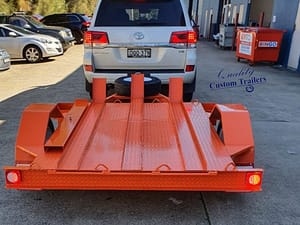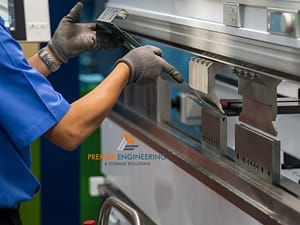As the world continues to navigate the challenges posed by the COVID-19 pandemic, public transport systems have emerged as critical points for implementing safety measures to protect both passengers and staff. Among these measures, the installation of Covid screens has played a pivotal role in enhancing the safety of public transport environments. These barriers are designed to minimize the risk of virus transmission in spaces where maintaining social distance can be challenging.
The adaptation of public transport settings to include Covid screens is not just a response to an immediate health crisis but a forward-looking approach to ensuring safer travel during and beyond the pandemic. This introduction to Covid screens underscores their importance in adapting public environments to safeguard public health while maintaining the essential services provided by public transport systems.
The Need for Covid Screens in Public Transport
Public transport systems, characterized by high passenger turnover and enclosed spaces, present significant transmission risks for respiratory viruses like COVID-19. The nature of public transport—buses, trains, and taxis—often makes it difficult for passengers to maintain the recommended distances from one another, elevating the potential for virus spread. In response, Covid screens serve as a critical intervention, acting as physical barriers that reduce the risk of airborne particles passing between passengers and drivers or among passengers themselves.
These screens are particularly vital during peak travel times when vehicles are crowded, and the risk of transmission is heightened. By blocking direct pathways for viral particles, Covid screens contribute significantly to the broader effort to reduce transmission risks associated with public transport, thereby playing an essential role in public health strategies aimed at controlling the spread of the virus.
Types of Covid Screens Used in Public Transport
The implementation of Covid screens across various modes of public transport has necessitated a diverse range of materials and designs, tailored to the specific requirements of buses, trains, and taxis. The materials chosen for these screens typically balance durability with clarity to maintain visibility for safety while providing effective protection. Common materials include plexiglass (acrylic), polycarbonate, and tempered glass, each selected for its properties that meet the unique demands of public transport environments.
- Buses and Coaches: Screens in these vehicles are often installed around the driver’s area and between seats to minimize contact between passengers and with the driver. Designs must accommodate door mechanisms and ensure driver visibility and emergency access.
- Trains: Given the larger size and different seating arrangements in trains, screens here may be used to separate seating areas or compartmentalize spaces, with considerations for emergency evacuations and passenger flow.
- Taxis and Rideshares: Compact and tailored solutions are necessary for these smaller vehicles, with screens installed between the driver and passengers. Flexibility and ease of installation are key, as these vehicles are personal property and have varied interior designs.
Installation Challenges and Solutions
The implementation of Covid screens in public transport vehicles brings with it a set of challenges, primarily due to space constraints and mobility considerations. Vehicles such as buses, trains, and taxis are designed to maximize passenger capacity, leaving limited room for the addition of screens without impeding movement or comfort. Moreover, ensuring the mobility of passengers and the accessibility of exits in case of emergencies are paramount concerns that must be addressed during installation.
Innovative approaches have been developed to overcome these challenges, focusing on the durability and effectiveness of screens while maintaining the functional layout of vehicles. For buses and trains, custom-fitted screens that follow the contours of existing interiors help maximize space without sacrificing safety. In taxis, removable or retractable screens offer flexibility for drivers who use their vehicles for personal purposes outside working hours. Manufacturers have also explored the use of lightweight, high-strength materials that provide robust protection without adding significant weight or bulk.
Solutions such as adjustable mounts or clamps allow for screens to be installed without permanent alterations to the vehicle, preserving its integrity and enabling easy removal if necessary. Additionally, the design of screens with transparency and minimal frame obstruction ensures that safety, in terms of visibility for drivers and passengers, is not compromised.
Passenger and Operator Feedback
General feedback from passengers regarding the use of Covid screens in public transport has been largely positive, with many appreciating the added layer of protection they provide. Passengers report feeling safer and more confident while traveling, which has been crucial in encouraging the use of public transport during the pandemic. However, some concerns have been raised about the impact of screens on interpersonal interactions and the overall travel experience, with a few passengers finding the screens to be impersonal or isolating.
Operators, on the other hand, have provided insights into the practical aspects of screen installation and maintenance. They highlight the importance of easy-to-clean surfaces to maintain hygiene standards and the need for durable materials to withstand the wear and tear of daily use. Operators also stress the significance of training for staff on the proper care and maintenance of screens, as well as protocols for dealing with damages or vandalism effectively.
Effectiveness of Covid Screens in Reducing Transmission
The effectiveness of Covid screens in reducing virus transmission has been a subject of study since their implementation. Available data and expert opinions suggest that when used in conjunction with other safety measures, such as masks and improved ventilation, screens can significantly lower the risk of airborne transmission. The physical barrier they provide is effective in blocking respiratory droplets, which are a primary mode of COVID-19 transmission.
Experts agree that no single measure is sufficient on its own to prevent the spread of the virus. Instead, a layered approach to safety, incorporating multiple preventative strategies, is most effective. Covid screens serve as an integral part of this multifaceted approach in public transport settings. They work best when complemented by regular sanitization, mask-wearing, and strategies to enhance airflow and filtration within vehicles.
Maintenance and Hygiene Protocols for Covid Screens
To maintain the effectiveness and integrity of Covid screens in public transport, adhering to strict cleaning and maintenance routines is essential. These protocols not only ensure the longevity of the screens but also reinforce their role in infection control.
Recommended Cleaning Routines:
- Daily Cleaning: Surfaces should be cleaned at least once a day with soap and water or with disinfectants that are effective against viruses. This routine is crucial for screens located in high-touch areas.
- Disinfection: Regular disinfection using EPA-approved disinfectants against COVID-19 should be part of the maintenance schedule, focusing on ensuring that the cleaning agents do not degrade the screen materials.
- Non-abrasive Materials: Use soft cloths or sponges to prevent scratches on the screens, which could harbor germs or reduce visibility.
Maintenance and Inspections:
- Regular inspections for damage or wear and tear are vital for ensuring the screens remain effective barriers. Any cracks, holes, or significant scratches should prompt immediate repair or replacement.
- Ensuring fixtures and fittings are secure keeps the screens stable and minimizes the risk of accidents, especially in moving vehicles.
The importance of these protocols cannot be overstated, as compromised screens could potentially reduce their effectiveness as barriers and thus pose a health risk.
Future Directions for Covid Screens in Public Transport
As the world adapts to living with COVID-19 and similar threats, the role of Covid screens in public transport is likely to evolve. Permanent installations may become standard in certain settings, particularly where close contact is unavoidable, such as in city buses or taxis. These installations would necessitate designs that integrate seamlessly with vehicle interiors while maintaining safety and comfort for passengers.
Technological Innovations:
- Future designs may incorporate antimicrobial coatings that actively inhibit the growth of viruses and bacteria on the surface of the screens.
- Smart materials could allow screens to change transparency based on the time of day or passenger density, enhancing comfort without compromising safety.
- The development of lighter, stronger materials will make screens more durable and easier to install in a wider range of vehicles.
Conclusion
Covid screens have played a pivotal role in enhancing the safety of public transport during the pandemic, acting as a crucial barrier against the transmission of COVID-19. Their introduction has been a testament to the agility and commitment of transport authorities and operators in ensuring passenger and staff safety in challenging times. As we move forward, the lessons learned and the protocols established provide a valuable framework for dealing with current and future public health challenges.







